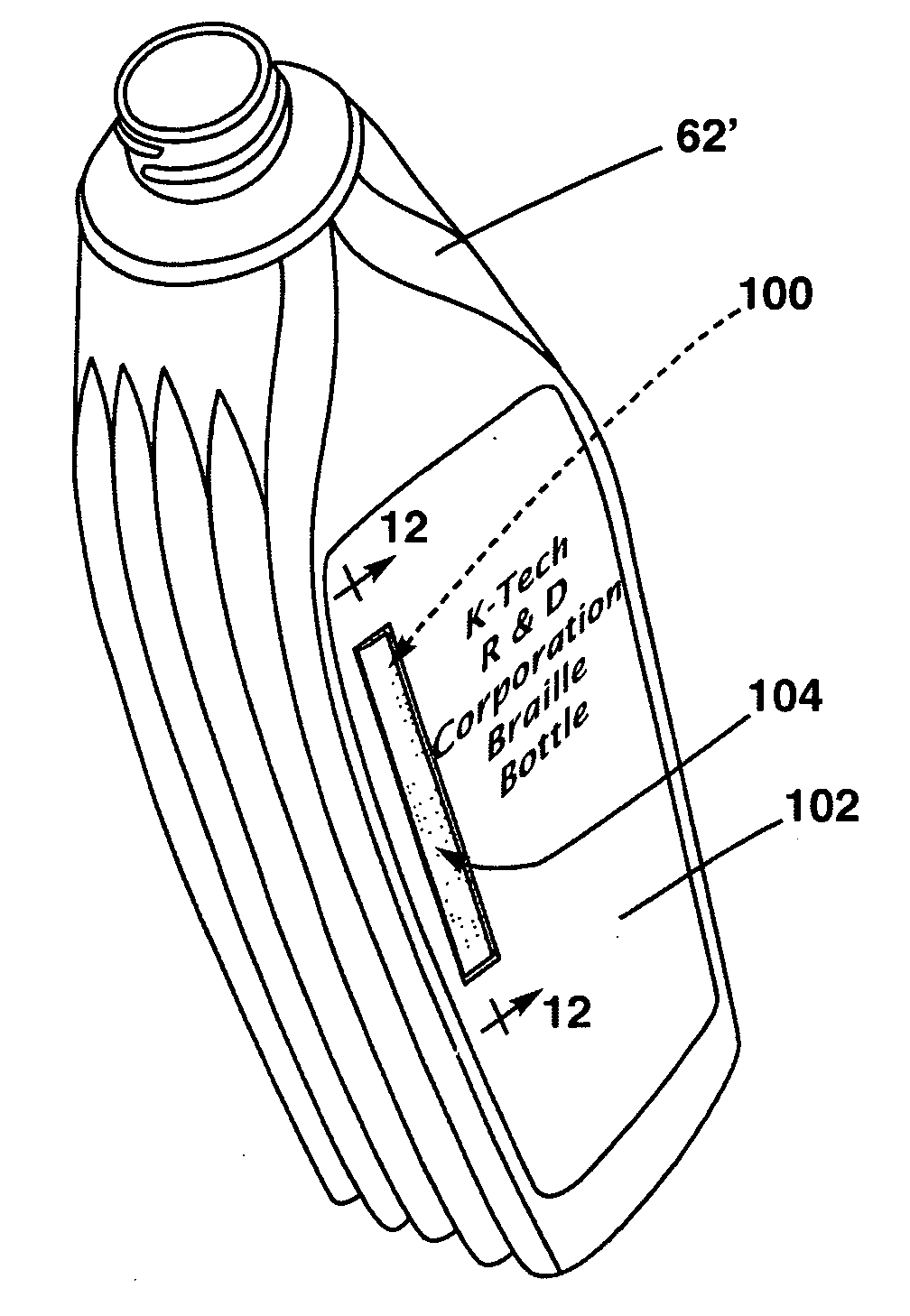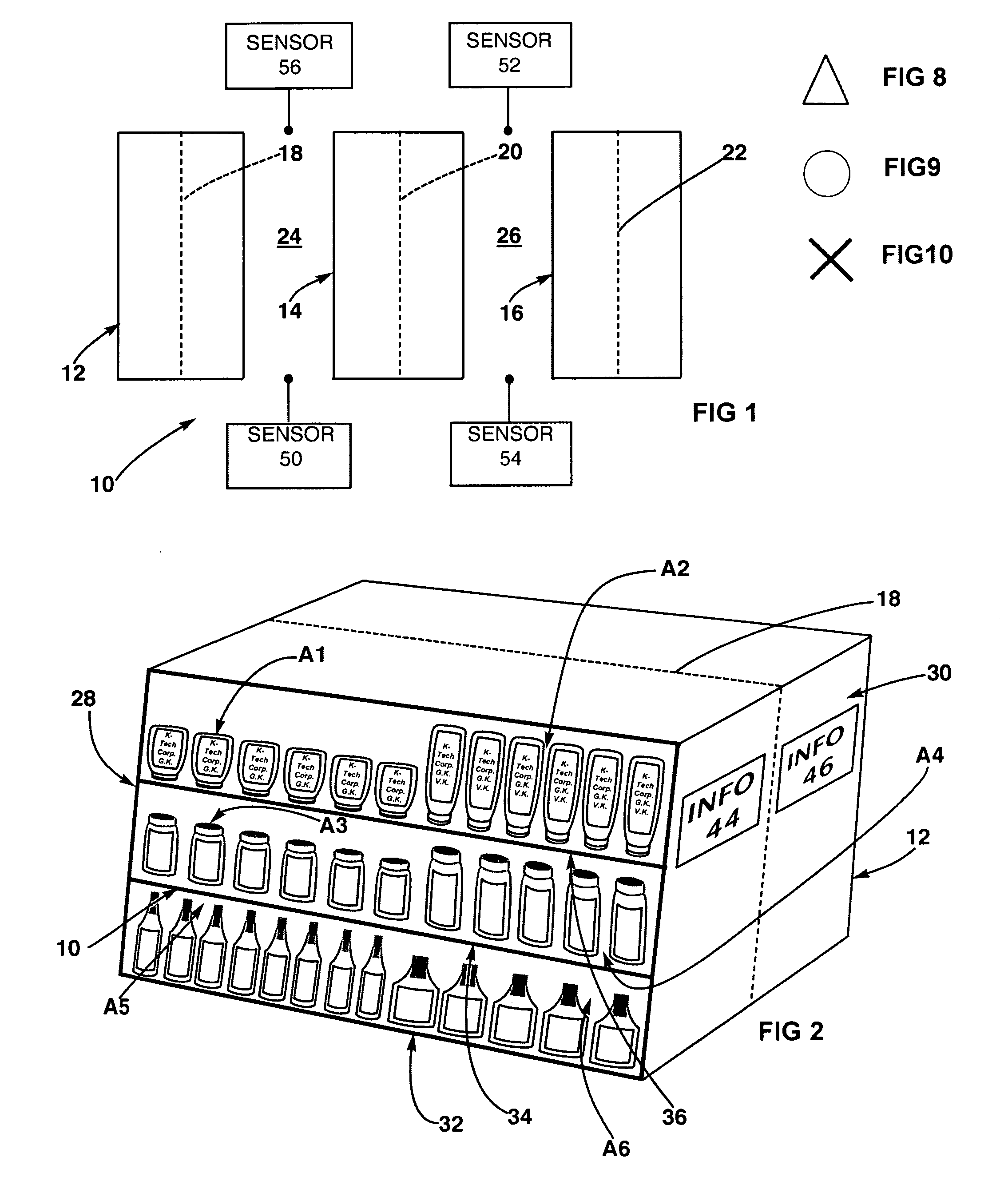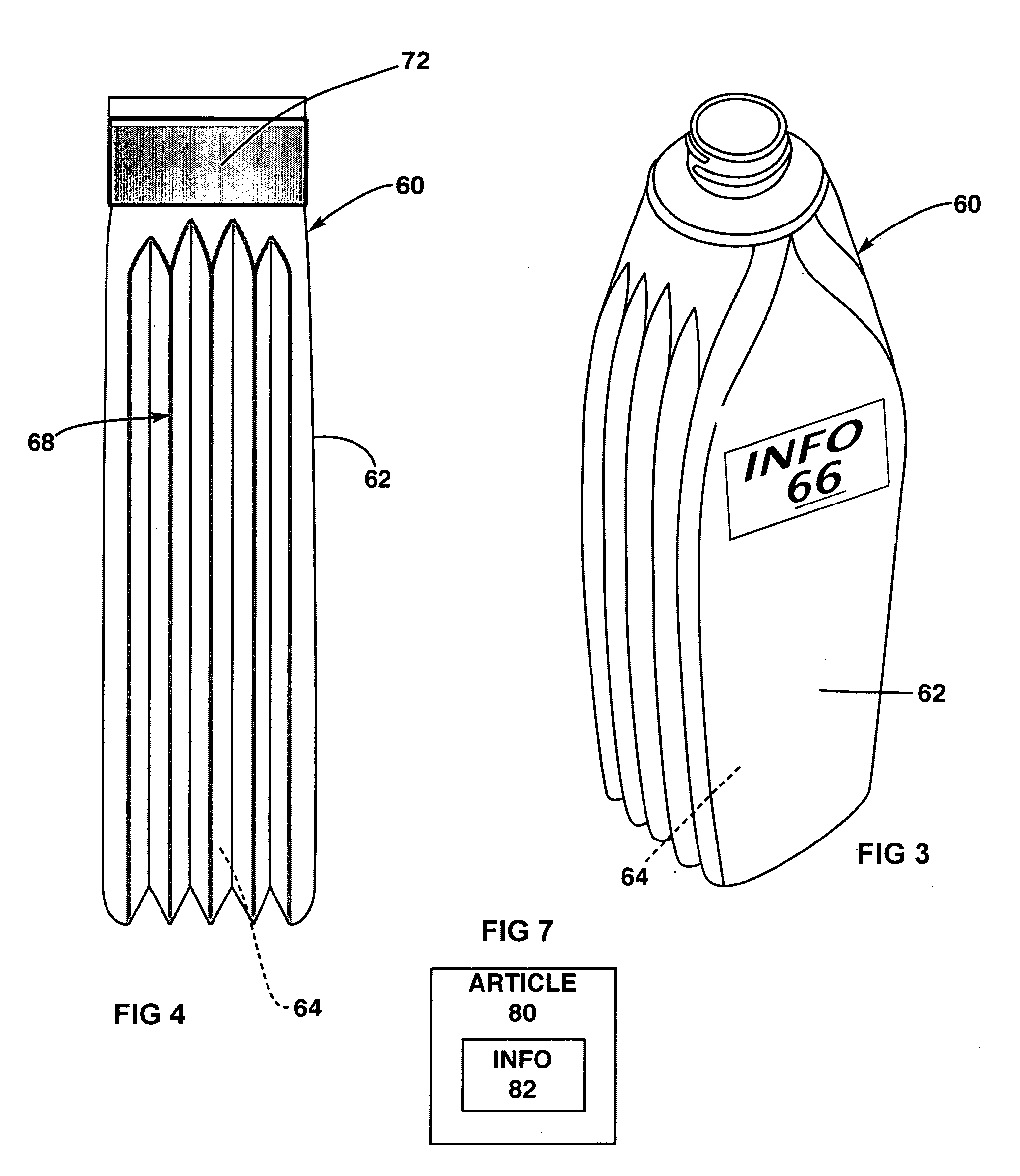Product identification system for persons with limited vision
- Summary
- Abstract
- Description
- Claims
- Application Information
AI Technical Summary
Benefits of technology
Problems solved by technology
Method used
Image
Examples
Embodiment Construction
[0053]While the invention has utility in virtually limitless different environments, one exemplary environment will be described hereinbelow, with it being understood that the invention is not so limited in its application.
[0054]In FIG. 1, a point of purchase display is shown at 10 for portable consumer articles / products, which are unlimited in terms of their possible form. For example, the articles may be edible grocery store products, consumer electronics, hardware items, etc.
[0055]In this embodiment, three like shelving units 12, 14, 16 are provided. The shelving units 12, 14, 16 are each two-sided, with vertical dividing walls 18, 20, 22, respectively. Aisles 24, 26 are provided between shelving units 12, 14 and 14, 16 to allow consumers to navigate therebetween and identify what is displayed on the shelving units 12, 1416.
[0056]As seen in FIG. 2, the exemplary shelving unit 12 has spaced end walls 28, 30 and a plurality of horizontally extending shelves 32, 34, 36, spaced verti...
PUM
 Login to View More
Login to View More Abstract
Description
Claims
Application Information
 Login to View More
Login to View More - R&D
- Intellectual Property
- Life Sciences
- Materials
- Tech Scout
- Unparalleled Data Quality
- Higher Quality Content
- 60% Fewer Hallucinations
Browse by: Latest US Patents, China's latest patents, Technical Efficacy Thesaurus, Application Domain, Technology Topic, Popular Technical Reports.
© 2025 PatSnap. All rights reserved.Legal|Privacy policy|Modern Slavery Act Transparency Statement|Sitemap|About US| Contact US: help@patsnap.com



